Blow out of the water. Episodes of the Falkland War
Exactly 31 a year ago, in the May days of 1982, the battles in the South Atlantic thundered.
The Falklands conflict has refuted most of the ideas about the modern sea battle. Instead of a “high-tech” war using radar, rocket weapons and satellite communications, where each enemy’s move is calculated from a pharmaceutical accuracy on a computer, and orders from London are delivered in real time to the other end of the Earth - instead of all this, Great Britain and Argentina got tragicomedy with non-explosive bombs, improvised missiles and sinking ships that were damaged slow and obsolete aircraft of the Argentine Air Force.
Failed weapons, friendly fire and the use of passenger airliners as naval reconnaissance are a brief description of that war. However, Falkland-82 cause genuine interest:
Firstly, this is the only maritime conflict that has occurred in the last 70 years - since the end of World War II. However, even this case can be called marine only conditionally: progress in aviation allowed jet aircraft to operate successfully from coastal bases. If the Argentines had a second active tanker and high-quality ammunition, the British squadron would have landed in full force on the approach to the islands.
The second important detail - in contrast to the usual format of modern wars (US vs Grenada), the Falklands War was a confrontation between two states of approximately equal strength. Each side had its own advantages: the British fleet - quantitative and qualitative superiority in armament and personnel training. Argentina - quantitative superiority in aviation, as well as, proximity to the theater of operations. As a result, none of the outside observers dared to give a confident forecast of the timing and results of the war in the South Atlantic.
Only when the Argentine fleet received an urgent order to return to the bases, it became obvious that Argentina would lose the war.
But what caused the sudden flight of the Argentine sailors? After all, the Argentines had a small, but well-tailored fleet of outdated ships purchased from leading maritime powers. Including: an aircraft carrier with a squadron of Skyhawk attack aircraft, an artillery cruiser from the Second World War and even two newest destroyers of URO (ironically, the British type 42, acquired for 10 years before the start of the war). Perfect nonsense by today's standards. However, it is enough to “pat” the squadron of Her Majesty's 1982 model of the year.
The outdated ships of the Argentine Navy were modernized, equipped with Exocet and C Cat missile systems, modern radar and communication systems. Argentine deck aircraft made radar contact with the British compound. Enemy detected! Resolute attack with all available forces!
Alas, the plans of the Argentines suffer a complete collapse, the ships of Argentina leave the combat zone and hide in bases. The Ekoset missiles are being dismantled from the ships - a transport plane will deliver them to the Falkland Islands, where they will be launched from the shore by enemy ships.
Argentine sailors are afraid to approach the water. With horror and shudder, they look at the rolling crests of lead waves - somewhere there, beneath the surface of the cold ocean, an invisible Death moves. Five submarines fleet Her Majesty.
The British got their trump card from their sleeves. From now on, anyone who dares to get closer to the Falklands will get a kg of torpex into the side of the 340 - the combat unit of the British torpedo is able to break into two any enemy ship.
Submarines ... precisely nuclear submarines — Conqueor, Koreijs, Valiant, Splendid, and Spartan — drove the Argentine fleet into bases, ensuring the British had total supremacy of the sea — the fall of the blocked garrison on the Falklands became a matter of time.
Weekdays and exploits
The first to be killed was an Argentine cruiser “General Belgrano” - the 2 of May 1982 was literally “bitten off” by the nuclear submarine “Concaur”. With a torn off bow and a ruined engine room, the cruiser sank within 20 minutes after the torpedo attack. According to official figures, the victims of the incident were 323 sailor.
Repetition of the tragedy is not required. The indicative execution of the cruiser “Belgrano” gave impressive results: the Argentine fleet, realizing its helplessness before the underwater threat, immediately hid in the bases.
The sinking of the Belgrano initially pursued a purely practical benefit: the cruiser was a deadly threat to the British squadron, and it had to be eliminated. Fifteen 152 mm guns could easily sink all the frigates, tankers and container ships of Her Majesty - the British simply did not have the means to counter the Argentine cruiser. Wrapped in steel armor, the old knight was immune to 4,5 'cannon fire and the Exocet missiles that some of the British ships were equipped with. Alas, the General Belgrano fell in an unequal battle with the nuclear submarine.
The entire nose of the cruiser is cut off by an explosion - to the first tower of the Civil Code
Submarine "Concaurus" has become a key factor in the victory of Britain. But what did the rest of the submarines of Her Majesty?
After all, the 5 British nuclear-powered ships, one British diesel-electric submarine for special operations and two Argentine dizeluchs - a total of eight submarines, each of which has its own combat, took part in the Falklands War. history. However, very little is known about their actions - thematic sources often ignore the submarine fleet, preferring to talk about surface ships.
Indeed, the story about the combat service of submarines is of little interest from the point of view of the media - British nuclear-powered ships did not receive damage from the actions of the enemy. They did not explode, burned or sank. Did not engage in battle with Argentine aviation. They didn’t use their weapons - only the Concaur submarine was able to shoot in combat.
The rest of the submarines just calmly patrolled along the coast of Patagonia, sometimes performing completely fantastic functions. For example, provide long-range radar detection in the interests of the British squadron.
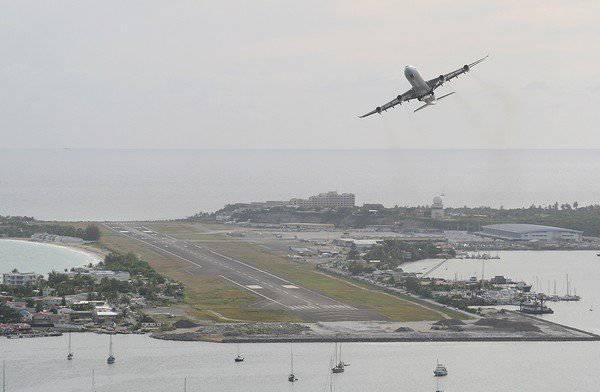
Atomic submarines "Spartan" and "Splendid" operated in the vicinity of the Rio Grande airbase (Tierra del Fuego Island) - lifting the retractable devices and means of detection (periscopes, radar antennas and electronic reconnaissance systems) above the water, tracking all movement of Argentine aviation.
“12: 15. Passenger "Boeing" - a course in the open ocean. " “14: 20. Four combat aircraft - a course to the northeast. Get ready for the guests' visit. ”
Operational information from the submarines allowed the British to at least somehow plan to repel air attacks - knowing the approximate arrival time of the “guests” and the most likely direction of attack, deck fighters “Sea Harrier” and “Sea King” helicopters were hanging in the air, hanging foil garlands over the ocean and dipole reflectors. Preparing for battle calculations SAM and anti-aircraft guns.
However, after some time, the Argentines spotted suspicious activity of British submarines in the vicinity of the Rio Grande air base and guessed about the plans of the enemy. Unable to drive off the unceremonious observers, the Argentine Air Force used elementary cunning - they began to take to the air every day their entire aviation, without any reason.
“11: 10. Soared passenger business jet. “11: 40. Takeoff four "Daggerov." “11: 50. Two combat aircraft - the course of the northeast. "
Panic begins on British ships - tons of foil strips fly into the air. Sailors with horror await a massive air attack. But the enemy is nowhere ... tension is growing, the British nerves are on the edge. "Harriers" frantically rush over the Atlantic, burning precious fuel. And so every day.
An interesting fact - the submarine "Spartan" became the first ship of Her Majesty, arrived in the conflict area at the beginning of April 1982, 20 days before the main forces of the squadron. Invisible underwater reconnaissance explored the coast of the occupied Falkland Islands, calculated the approximate number of enemy forces and tracked down the Argentine mineships. However, the Spartan did not receive an order to open fire - everyone was hoping to the last for a peaceful resolution of the conflict.
In addition to monitoring the Rio Grande air base, one of the British submarines was continuously on duty at the entrance to Puerto Belgrano, the main naval base of Argentina (Buenos Aires province). 5 May 1982, a submarine reaching a shallow depth, was noticed by anti-submarine aviation aircraft - realizing that it was discovered, the nuclear submarine plunged and ... melted into the ocean without a trace. The Argentines did not manage to get rid of the intrusive and attentive "guard" until the last day of the war - any attempt to bring the fleet into the ocean meant an inevitable catastrophe - the underwater killer "Koreydzhes" would kill all the ships of the Argentine Navy right at the exit from the base.
But the most curious incident occurred with the Valiant submarine - in the absence of a sea enemy, the boat was sent to the Rio Grande. Now "Valiant", "Spartan" and "Splendid" already with three periscopes monitored the situation at the Argentine air base. But an incredible thing happened - the Daggers of the Argentine Air Force who had returned from a combat mission could not detect the target and decided to get rid of the dangerous cargo by dropping bombs into the ocean. Bombs fell well, almost hooking the British nuclear submarine. By chance.
The body of a steel fish shuddered from close explosions, the sound-absorbing coating had come unstuck from the outer side of the cabin. “Valiant” counted combat damage. Nevertheless, the boat spent a day on combat patrols of the 101, thus becoming a record holder among British submarines.
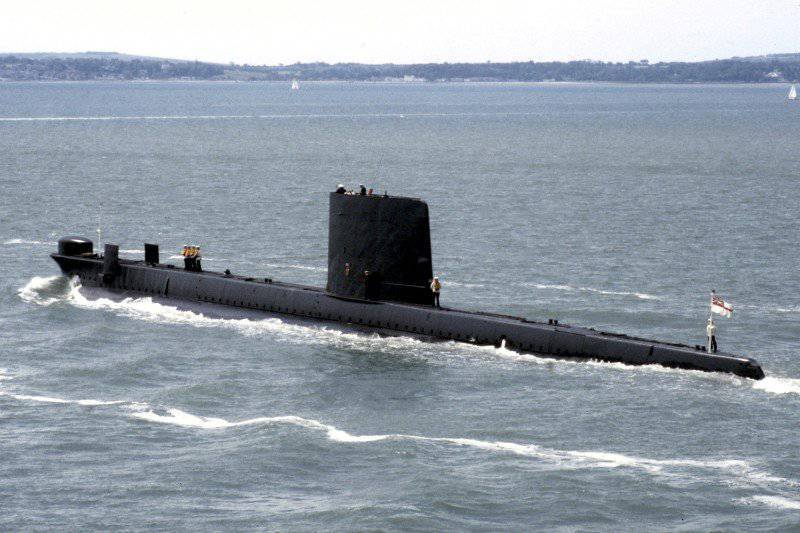
Separately, it is worth noting the small angry fish "Onyx" - the only British diesel-electric submarines that took part in the conflict. Unlike her older "colleagues", the baby performed complex and risky operations directly in the coastal waters of the Falkland Islands. Already on April 20, the first group of SBS (Special Boat Service) Marine Special Forces was sent to the island of South Georgia from the submarine Onyx for reconnaissance and survey of the coast. Then there was a long and dangerous job off the coast of the Falkland Islands. During one of the nightly landings, the boat flew onto the rocks, seriously damaging the bow. However, later Onyx was able to return to the UK on its own, having traversed its route in 20 000 nautical miles during the hike.
In addition, the submarine "Onyx" is known for having delivered a "blow of mercy" to the heavily damaged landing ship "Sir Galahed", sinking it with a torpedo in the open ocean.
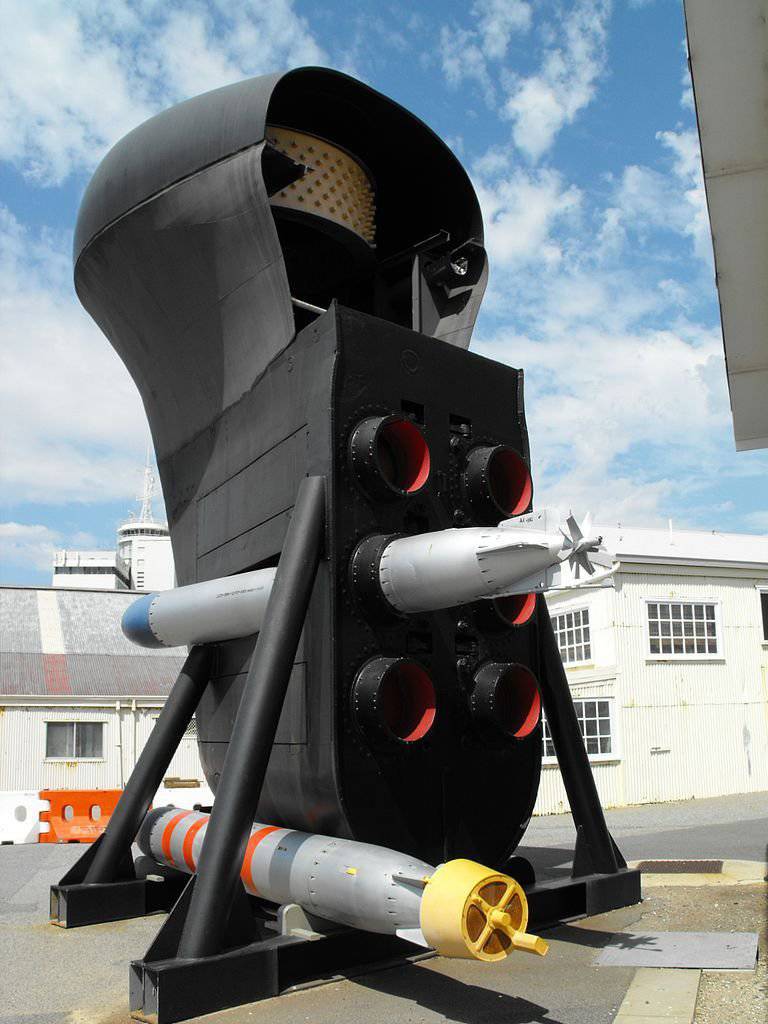
Argentina Navy Submarines
The actions of the Argentine submariners can hardly be called a role model. Numerous problems, outdated equipment and insufficient training of personnel — it was useless to expect any great results in such a situation. The British had a serious anti-submarine defense - 22 destroyer and frigate, modern hydroacoustic stations, dozens of anti-submarine helicopters. All this against the only active submarine of the Argentine Navy!
Nevertheless, even in these difficult conditions, the Argentine submariners were able to achieve some success: the diesel-electric submarine "San Luis" was the only ship that could break the naval blockade and attack the ships of the British squadron.
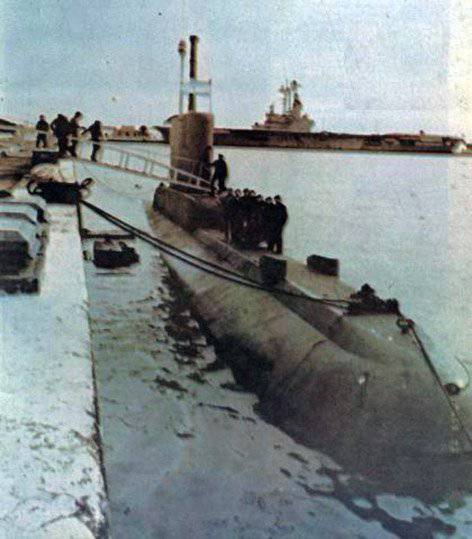
Three attacks. Three torpedoes fired. Two recorded explosions. The Argentine version of events can only cause a grin.
20 hours of sticky fear. In pursuit of a boat frigates "Brilliant" and "Yarmouth" are abandoned. A series of dropped depth charges and at least one torpedo fired. The British version of the events leaves no doubt - the impressions of the Argentine submarine acquaintance with the 1 event of May 1982 will be followed by the sailors in terrible dreams for a long time.
Ten days later, another mystical incident happened - Her Majesty's frigate “Arrow” heard a powerful explosion behind the stern - when they began to pull the towed acoustic trap, it turned out that only fragments of the cable remained from it. That day, the Argentine submariners were one step away from victory.
The most surprising thing is that after all the vicissitudes of this combat campaign, the Argentine submarine San Luis returned safely to the base. It remains unclear why the submarine crew conducted attacks with single shots - according to the simple rules of the submarine war, to guarantee the destruction of the target, it should be fired with a volley - releasing torpedoes in the direction of the enemy. Perhaps the Argentines had some technical problems that did not allow them to fully realize the capabilities of the submarine.

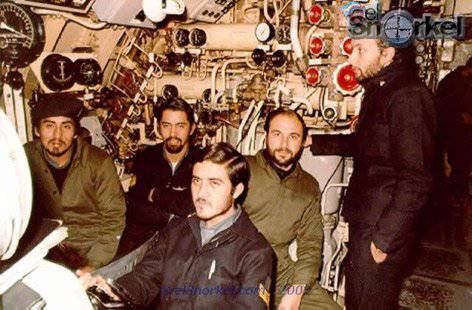
Argentine "Varyag"
For completeness, it should be added that the second submarine of the Argentine Navy, the Santa Fe, took part in the conflict. Holy faith. Alas, the pious name did not bring success to the ship - the Santa Fe perished in the first days of the war.
How could this happen? The only fact puts everything in its place: “Santa Fe” is a former diesel-electric submarine USS Catfish (SS-339) of the “Balao” type. Launched (attention!) In 1944 year.
Going to sea on the "Santa Fe" in the century of powerful nuclear submarines and guided missile weapons, was very risky from the Argentine sailors. The situation was complicated by the lack of radio communications on the boat (a little later the radar failed). But even this “old bucket” turned out to be a dangerous adversary, and its sinking turned into a tragicomedy with an enchanting finale.
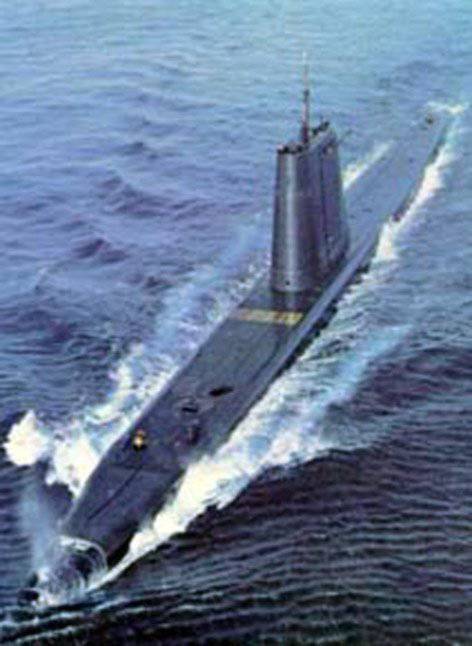
For the first time, Santa Fe secretly landed 2 Special Forces Group on April 1982 of the year - during the brilliantly captured South Georgia Island.
24 April 1982, the boat once again delivered a group of paratroopers and equipment to the island, where she was discovered by British helicopters. The news of the Argentine submarine so pleased the British that the frigate and tanker of the expeditionary forces rushed to the horizon, and the military icebreaker "Endurenz" climbed into an impassable ice field, where he spent the whole night, chattering his teeth for fear. Helicopters made 8 sorties overnight to search for enemy submarines.
On April 26, Santa Fe, on the surface, spotted a helicopter radar. The British threw the boat depth charges, and then drove into it two small RCC. Despite the fire in the felling fence, increasing roll and trim, Santa Fe was able to moor at the pier of the old whaling station at South Georgia. The crew was captured.
The British did not calm down on this - the submarine standing on the shore still posed a considerable danger - 23 torpedoes, fuel, a faulty battery. It was necessary to transfer the Santa Fe to a safe place as soon as possible. A part of the Santa Fe crew was involved in the boat transfer operation. According to the Argentine version, there was an alleged attempt at sabotage, which resulted in the shooting of an Argentine sailor, Felix Artuzo. Whether it was in fact the heroic act of the Argentine sailors or the result of the usual mess (the Argentines did not know English, and the British - Spanish), but the damaged Santa Fe sank right in the middle of the fairway.
That's the story.
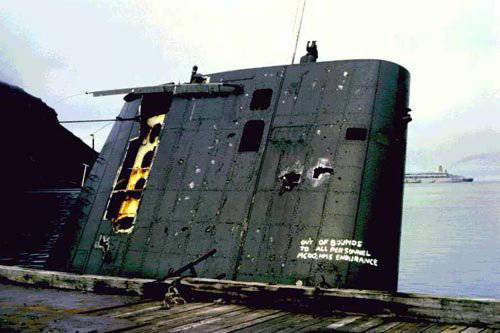
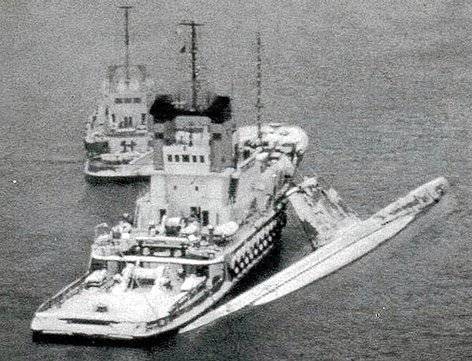
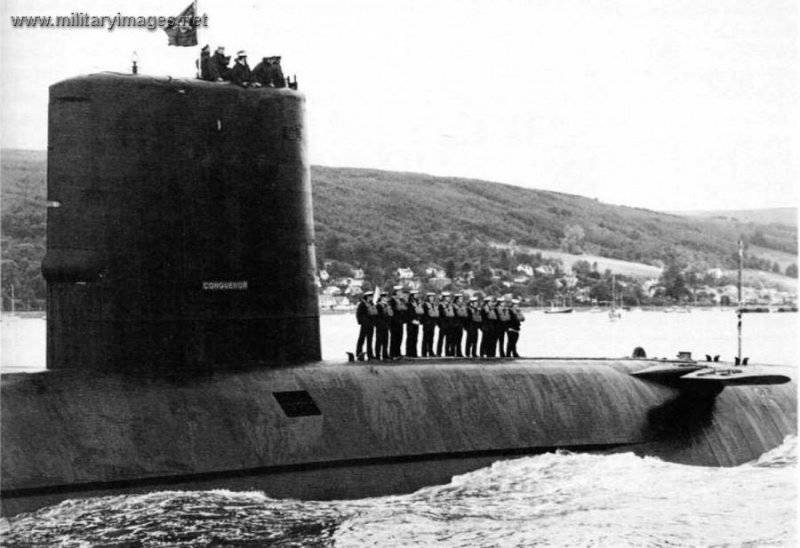
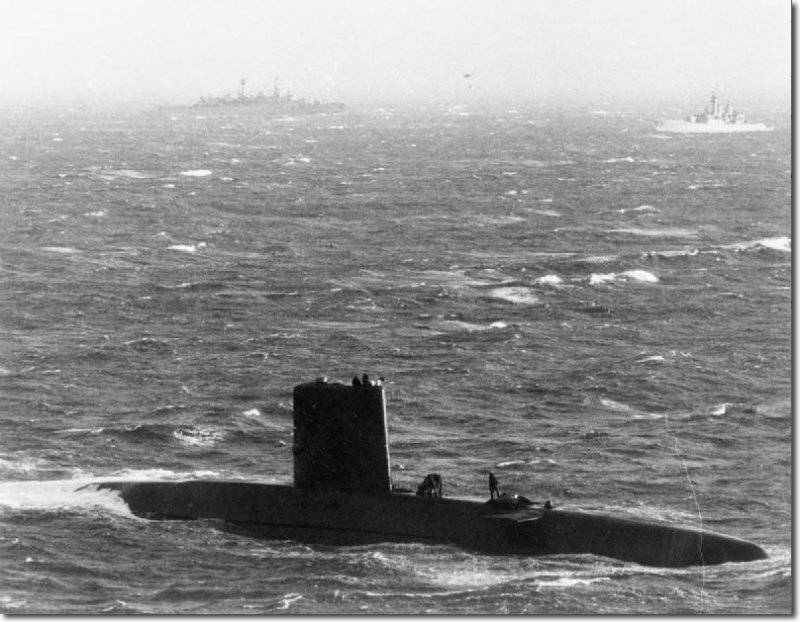
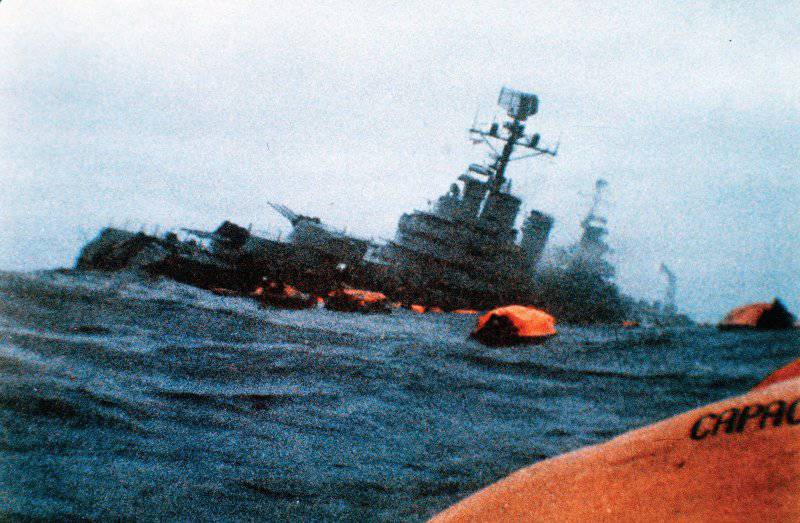
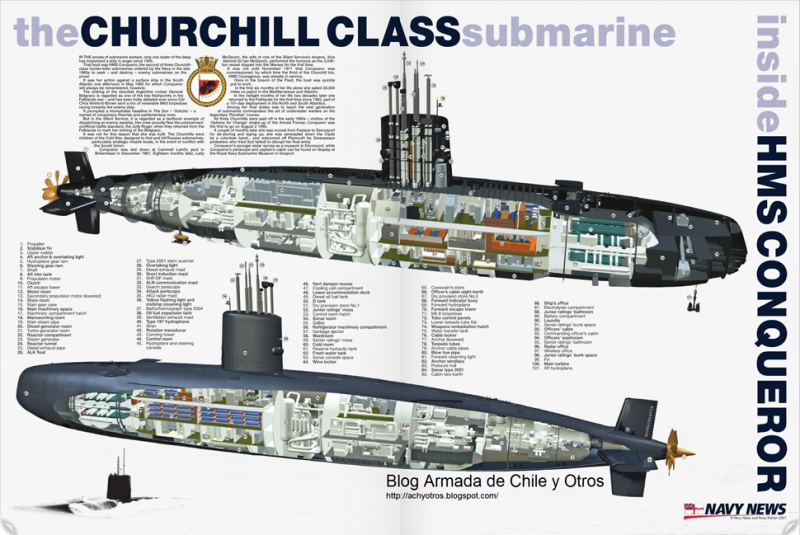
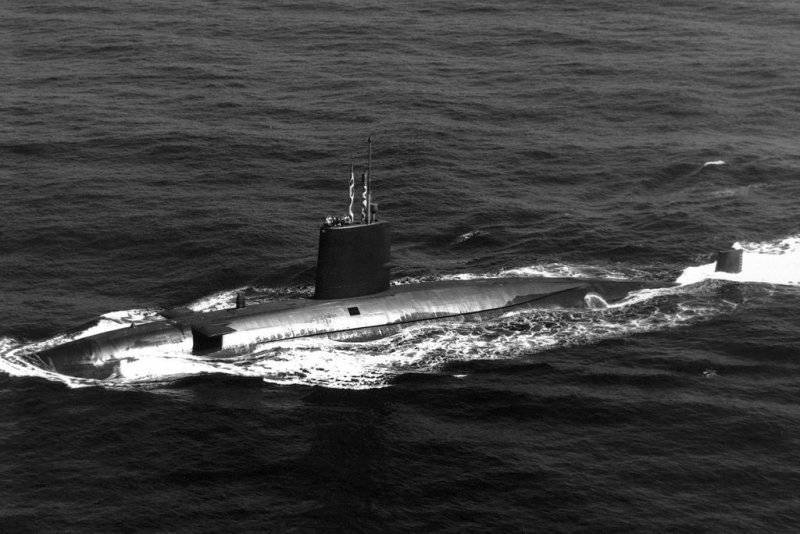
Information